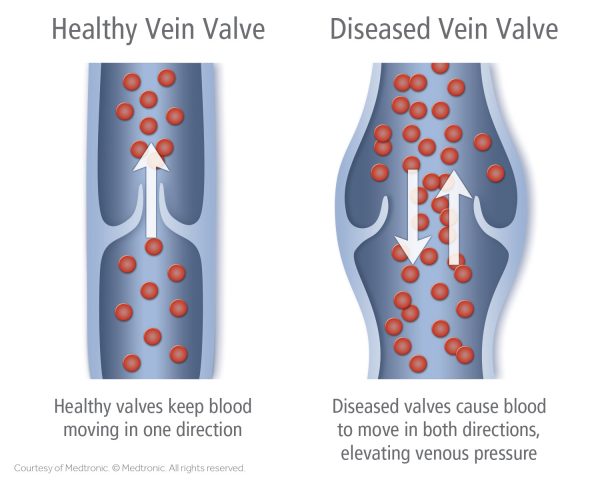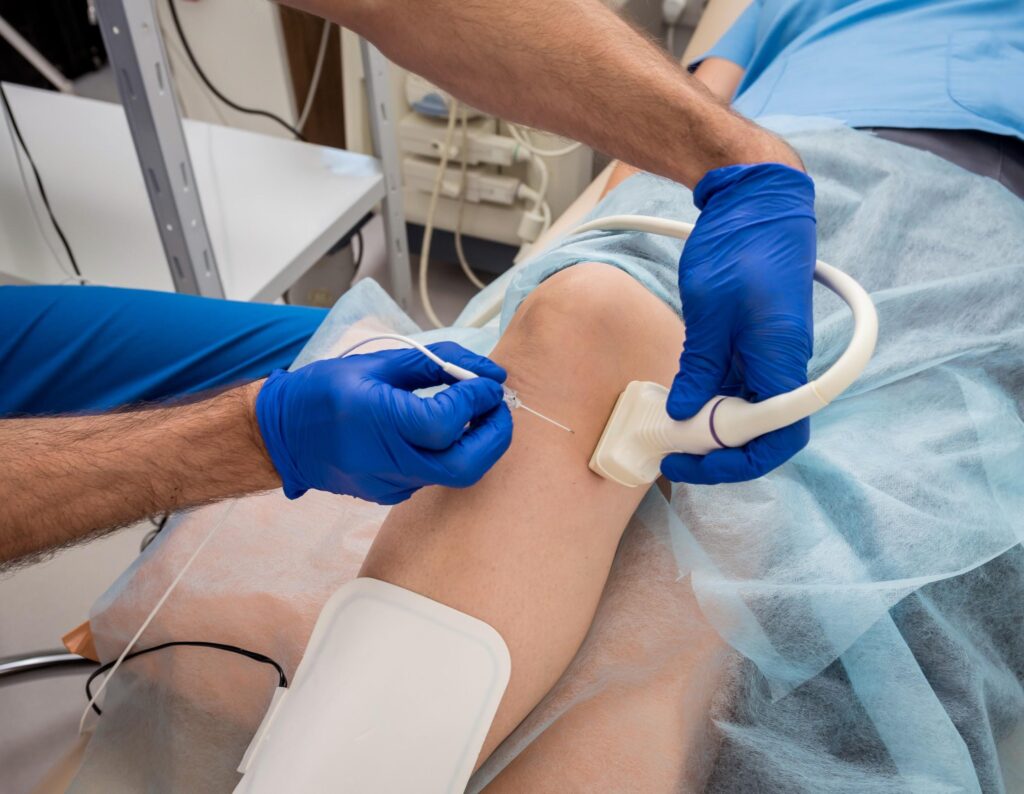Venous insufficiency, also known as venous insufficiency reflux, is a condition that develops when the veins in your legs become unhealthy or damaged. This causes blood to reflux or pool in your veins, which leads to many uncomfortable symptoms such as leg pain, burning, itching, restless legs, heaviness, and fatigue. When left untreated, venous reflux can lead to more significant clinical issues such as pain, chronic swelling, skin discoloration, thickening of the skin, and ulceration.

Healthy veins help the heart circulate blood through the lower extremities through the use of tiny valves. These valves prevent blood from returning towards the heart and keep a continual flow. Unfortunately, these veins can become damaged or dysfunctional over time. With poor valve control, blood no longer flows the way it should. Blood pools, and this venous pooling causes discoloration due to the build-up of oxygen-starved blood cells. If the backup is serious enough, blood clots can form that may threaten your life.
More than 30 million people in the U.S. are affected by venous insufficiency with only 1.9 million seeing treatment annually. This leaves the vast majority undiagnosed and untreated. If you have had issues with chronic venous insufficiency, you know that it can be an embarrassing condition. The desire to hide spider veins, varicose veins, and discoloration is very understandable. But without treatment, you may experience progressive symptoms such as swollen legs, skin damage, and/or ulcers that can be debilitating and significantly impact your quality of life.





